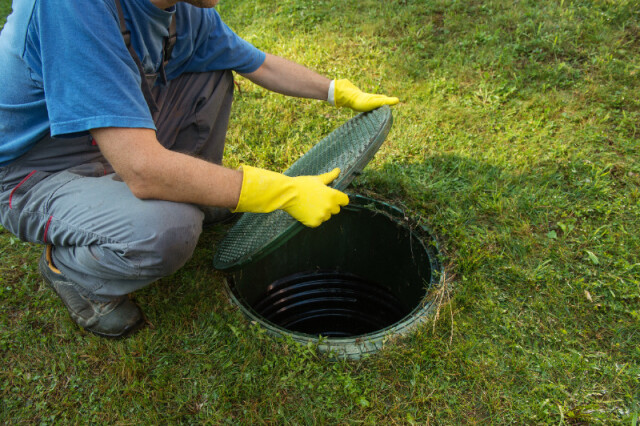How are septic tanks cleaned?

If you live in a rural area, there is a good chance you have a septic tank, and when you flush the toilet, take a shower, or wash clothes, the water exits the house and goes to the septic tank. A septic tank works like a trap. The tank’s purpose is to capture solids and allow for clearer water to go onto the secondary treatment. Heavy solids sink to the bottom of the tank, and lighter solids: fats, oils, greases, and toilet paper float to the top. When a septic tank gets 25% to 33% full of solids, it should be pumped.
How Often Should You Clean Your Septic Tank?
Generally, your septic tank should be pumped or cleaned every 2 or 3 years, depending upon the size of your tank and the size of your household and water usage. When it is time for service, a vacuum truck will arrive at your home on the day of your scheduled appointment. Typically, the vacuum truck will back into your driveway and run a large hose to the septic tank. Most septic tanks will have risers to grade for easy access. Tanks without risers may require digging to access them. Experts recommend having risers to grade to make your tank easily accessible.
The contents of your tank are then removed by a hose attached to a tank truck with a vacuum pump and hauled away for disposal. The code of practice per the National Association of Wastewater Technicians states that a tank is considered cleaned when all organic solids are removed and the total average depth remaining in the tank is between 1” and 3”. At the time of pumping, the condition of the tank, risers, baffles, and tank levels are all recorded as required by the Ohio Department of Health.
How Do You Maintain a Clean Septic Tank?
A technician from a good company will then recommend a schedule of how often your tank should be pumped or cleaned and ensure a reminder card is mailed to you at the proper time.
Call Tim Frank Septic Tank Cleaning Co. at 440-636-5111 to schedule a consultation and appointment.
